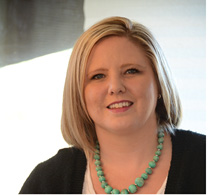What are “levels of care” in mental health?

Mental health can be a confusing and daunting world to navigate. Sometimes problems arise slowly over years, only to suddenly become too much for you or your loved one to handle. If you are lucky, you catch it before it is at crisis stage. For those who aren’t lucky and find themselves living in the crisis stage, even if just momentarily, it feels unbearable. It’s confusing, overwhelming and hopeless. Finding the right level of care is an important step to getting better.
A level of care is differentiated by the intensity of care a person is receiving. Sometimes in a crisis you start at a high level of care and work to a lower level. If someone notices symptoms early, they might start at a lower level of care and stay there.
Level 1 Care
The lowest level of care that is most commonly accessed is traditional outpatient care. This includes individual therapy, family therapy, group therapy, and psychiatry
What types of issues are treated with this level of care?
Most issues can be treated at this level of care if the individual isn’t in crisis. The levels of care are about how much support is provided. Issues such as problems at school/work, friendship issues, self-esteem or divorce might be discussed. Diagnosable issues such as depression, anxiety and mood may also be treated at this level of care.
What to expect
At the traditional outpatient care level you might be seeing a therapist, psychologist or psychiatrist for appointments. You typically meet with your provider one-on-one, although family members may be involved in some cases. The person at this level of care is safe enough to themselves and others that they can work on things in therapy once, or maybe twice a week if needed. Depending on their schedules some individuals may choose to meet every other week.
All states license differently so check what type of provider you are looking for in your state.
In Texas, a therapist is a master’s level clinician with a license of Licensed Professional Counselor (LPC), Licensed Marriage and Family Therapist (LMFT) or Licensed Clinical Social Worker (LCSW). There may be an “S” designation following, which signifies that the person is capable of supervising those without a full license. For LPCs and LMFTs, those without a full license are associates and will have an “A” following their name. For the social work license it would be a LMSW or Licensed Master Social Worker. There might be numerous other letters after the name. Those are often specific designations that therapists earn through continuing education and training such as play therapy, art therapy, or registered to provide a specific model of therapy. A psychologist is a Ph.D. or Psy.D. and has a doctoral degree. The licenses above are those who will provide therapy sessions usually weekly, for 45-60 minutes at a time. For medication you will need to see a medical provider. A psychiatrist is an M.D. with a specialization in psychiatric medication. You may also see a Physician’s Assistant (PA) or Nurse Practitioner (NP) who specialize in psychiatric medication. PAs and NPs are overseen by an M.D. and can prescribe medications. You might see this written out as ARNP (Advanced Registered Nurse Practitioner) or APRN (Advanced Practice Registered Nurse). PMHNP which stands for Psychiatric Mental-Health Nurse Practitioner, is also often seen. Medication providers might want to see you more often for follow-ups to start, and then will see you less frequently as you find medications that are suitable for your needs. Some psychiatrists do some therapy, but most of them are focusing on your medications. Psychiatry in conjunction with therapy is usually the best route for traditional outpatient treatment.
You can look up lists of providers through your insurance, and you can often find providers online. You can search for reviews, or you can look on websites such as PsychologyToday.com where they have providers searchable by insurances they accept and areas of focus. An individual may be in therapy for a few months or for years, depending on how much they are benefiting and what their goals are. Often when working with minors the therapist will be in contact with the school if needed, and may give suggestions for home behavior plans if needed.
Level 2 Care
Level 2 care includes Intensive Outpatient (IOP), followed closely by Partial Hospitalization Program (PHP). Usually PHP and IOP programs are both provided at the same location. This may be separate or attached to another level of care.
What types of issues are treated with this level of care?
These levels of care tend to require a slightly more intensive issue to be presented for treatment. When you need a higher level of support, it is because the issue is somewhat more worrying. At this level of care you are likely having a hard time participating in daily activities. If you are using this as a step-down level it is likely to wean you off of the higher support received at previous levels of care and to provide structure.
What to expect from IOP
The IOP level of care is where you might attend 3-5 days a week for 3-4 hours at a time and participate in numerous group therapies. These groups are often educational to teach skills that help you manage feelings and stressors. There may be individual or family sessions as well as a medication provider that you may meet with. Not all programs provide the same things. The times of day and days of the week vary depending on the program as well. IOP can be used as a step-down from PHP, or may be used prior to trying PHP. Often you will be assessed by a clinician at the program to see what level of support you require. You want to make sure the insurance authorizes you to use these levels of care as most programs beyond traditional outpatient require authorization. These programs can last 4-12 weeks.
What to expect from PHP
This is similar to IOP and is often done at the same facility. It is usually 5-7 days a week, and can be 4-10 hours a day. There are groups, individual therapy and psychiatry during this program. Family therapy may be included in some. At most of these programs for those still in school, a minor will do their school work at the program for half of the day and do therapy for the other half. Like IOP, there are different styles of therapy taught and provided at different programs. Some programs are part of “chains” that have different locations across the country, some are linked to specific hospital groups and some are local programs only. You might start at the PHP level of care and step down to IOP or up to inpatient if needed. You will be evaluated by a clinician prior to starting to determine the level of care recommended. These programs can last 2-8 weeks.
Level 3 Care
Level 3 care is acute psychiatric hospitalization for emergency care.
What types of issues are treated with this level of care?
Hospitalization is for emergency or crisis care. At this level of care the individual is a danger to themselves or others. In some cases it might be slightly abstract where a person is having a psychotic episode in which they are out of touch or reality or out of control. A serious mental illness is usually at-play in this level of care.
What to expect
This level of care is for acute psychiatric emergencies in which a person is a danger to themselves or others. An evaluation must be done and a doctor must give an order to admit to this level of care. Acute hospitals are locked facilities and provide groups, individual therapy, nursing and psychiatric care. At some facilities family therapy may be provided. Staff is also present to help ensure safety. Adults and minors are kept separately, but males and females aren’t always separated. School is not usually done in acute hospitalization, but they will give excuse notes for school and/or work.
This level of care has the most unstable clientele, and has a higher level of staff to patient ratio. Acute hospitals are often full and it can be difficult to find a bed. A person’s experience may vary greatly depending on the program and the individuals they are in a facility with. This level of care is for stabilization, and while they do teach skills it shouldn’t be expected to be the only treatment one ever seeks out. These programs may last about 3-14 days depending on how long insurance will cover. For those without insurance, a state hospital may be sought instead. While state hospitals may sound daunting, a search of reviews for state hospitals in Texas actually shows better reviews than some insurance funded acute hospitals. An acute hospital should recommend the next level of care, whether it is higher or lower. They can give referrals and send medical records after discharge.
Level 4 Care
Level 4 care is residential treatment and is the highest level of care.
What types of issues are treated with this level of care?
This is for the person who has a long history of trying different levels of care one or numerous times without much progress. Most individuals at this level have a serious mental illness diagnosis. In order to cover this level of care, insurance providers often require the individual to have attempted various other levels of care first.
What to expect
This last level of care is referred to as a residential treatment center (RTC) or a psychiatric residential treatment facility (PRTF). This is often seen as one of the most difficult levels of care to get to, and is in many cases the most restrictive level of care. Residential treatment is not the same as boarding school or even therapeutic boarding school. At the same time, it is also not like being in an acute hospital for months on end. Residential indicates that the person stays at the facility long term, but often that is only 30-90 days on average. Insurance doesn’t usually approve more than what they deem is medically necessary. If you are seeking a program that lasts longer than the average stay does, know that you will need to plan to pay out of pocket.
There are numerous facilities across the country that specialize in different types of treatment and provide a wide array of rules that residents must follow while there. Most have some sort of schooling attached whether it is a school on their campus or obtaining work from their home school district. Some treatment facilities do physical holds while others are hands-free. Some facilities are locked while others aren’t. You should always ask about the use of emergency medication (do they give this by mouth or injection?) and rules about the belongings a patient may bring with them. Individual and family therapy are usually provided weekly, along with numerous group therapies a day. Neuropsych or psychiatric testing may be a part of the program, as well. Many RTC programs provide various other types of therapy such as recreation, art or equine therapy. Psychiatrists provide medications at most residential treatment programs, and nurses are also on staff.
Residential care often will provide support for after discharge ranging from help setting up aftercare to checking in with the family after discharge.
The Wild Card – Wilderness Therapy
Wilderness is talked about often enough that it is worth including. It isn’t in the traditional levels of care because it isn’t covered by any insurance. There don’t seem to be many, if any, wilderness programs for those beyond the age of “young adult.” It involves taking a group into the wilderness and teaching them to depend on themselves. It is a combination of outdoor experiences and therapy. Basically, experiential therapy. It is able to remove a person from the distractions of daily life and create an atmosphere for healing. There are downsides, but arguably it can be said that it has many similar downsides to residential treatment.
In Summary
It is good to get some assistance as soon as you can. Sometimes it is hard to figure out what to do in an emergency so you want to start out before things are at that level. A therapist that you or your child sees regularly can often recommend stepping up to different levels of care and tell you relevant information you might need. Insurance is often accepted at many of the levels of care. You should always check your policy to make sure it covers these levels of care, and check to make sure the provider or facility you choose accepts it. Unfortunately beyond outpatient care, there are very few community programs that are affordable without insurance coverage. Always make sure you look into a provider and do your own research in your path to healing.

Stephanie Arsenault, MA, LPC-S
Stephanie is a Children and Family Therapist for Three Oaks Counseling Group.
She sees clients at our Georgetown and West Lake Hills offices.

